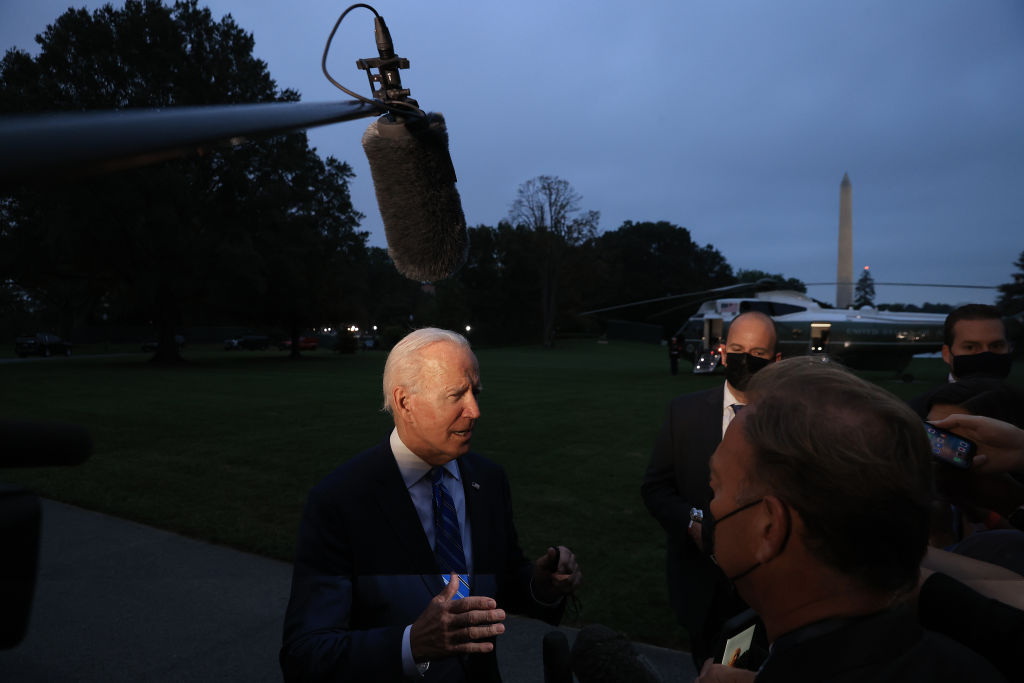Simon Cotton

This has been universally reported as a provocative misstatement. The reaction from Bonnie Glaser, director of the Asia program at the German Marshall Fund, is emblematic: ‘The President has a tendency to make gaffes but this is potentially quite dangerous … This is the only issue the US and China could go to war over so it’s something the administration has to be very careful on.’
There are a couple of issues with that interpretation. First, it’s possible that Biden’s statement was intentional. Given that he has said similar things in the recent past, it may be that he has decided to signal a move away from strategic ambiguity on an unofficial level. We’ll have to wait and see if he continues to contradict the official line.
More importantly, though, we should question whether Biden’s statement was in fact dangerous since ideally deterrence should reduce the chances of conflict.
There are two main reasons why someone might think a move away from strategic ambiguity would be a mistake. The most obvious points to the danger of emboldening Taiwan to provoke a conflict with China. While the US could condition a commitment to help Taiwan on Taiwan not declaring independence, it would be difficult not to incentivise lesser provocations. Lurking in the background, though, is a suspicion about deterrence in general. The basic worry is that, far from dampening the potential for conflict, making threats merely pours fuel on the flames, a dynamic the political scientist Robert Jervis has called the ‘spiral model’.
According to deterrence theory, the only hope you have of preventing an adversary from acting on a sincere threat is to communicate that, were they to do so, you would put up such a fight that they would be left regretting their decision. While a conflict can still occur if your adversary doesn’t consider you credible, this at least minimises the chances of that happening.
According to the spiral model, in contrast, matching a threat with a threat just makes things worse. Suppose A threatens B not because it covets B’s territory or resources but because it suspects B has aggressive intent (the situation of the US vis-à-vis China). If B has no such intent, and doesn’t recognise A’s mistake, it will simply view A as aggressive. If B then responds as deterrence theory says it should—with a threat of its own—it will just confirm A’s worse fears, leading to a spiral of escalation. This is worrying because, as the situation heats up, so does the risk that one party will launch a ‘preventive’ attack.
The poster child for the spiral model is sometimes thought to be the July Crisis of 1914 that led to the outbreak of World War I. The immediate parties to the crisis—Austria-Hungary and Serbia—were principally concerned with preserving territory rather than expanding it, as was Serbia’s patron Russia. And even Austria’s ally Germany, which did have imperial ambitions, didn’t want a war on two fronts. Yet, from Austria’s ultimatum to Serbia on, each threat was perceived by its target as revealing aggressive intent. Combined with the belief that technology favoured early movers, the dispute escalated from threats, to mobilisations, to, eventually, a ‘preventive’ attack.
Seen in this light, it’s obvious that the prospect of a spiral dynamic would quickly discredit a move away from strategic ambiguity. Fortunately, however, the spiral model is not applicable to the Taiwan case.
China wants to see Taiwan reunited with the mainland and so, in that limited and specific sense, it does have ‘aggressive intent’. Critically, too, it is neither self-deluded about its ambition nor blind to the fact that it is a major concern to the US. Indeed, China has enshrined its plans for Taiwan in law for all to see. So, were the US to commit to help Taiwan, it’s hard to see how China could interpret that as anything more sinister than what it is: an attempt to deter China from attacking Taiwan.
And even if China were otherwise liable to misinterpret a commitment to help Taiwan, its awareness of other factors would rule that out. If the US had any aggressive intent towards China, it could have acted on that when China was weaker. It certainly wouldn’t have helped China grow at a rate unmatched in modern history. Besides, China has a nuclear deterrent. In short, East Asia today is in no way like early 20th century Europe, and the idea that the US harbours ambitions against China is pure fantasy.
Strategically, it could still make sense for China to try to raise the spectre of the spiral model. However, China’s rhetoric suggests that even it recognises that this would be unconvincing. In response to Biden’s comments, for instance, China’s Foreign Ministry spokesman Wang Wenbin didn’t accuse the US of ambitions against China but of emboldening ‘separatist forces’ and thereby risking a conflict provoked by Taiwan.
Again, in considering a move away from strategic ambiguity, the US still must determine if a commitment could be formulated that would adequately mitigate this specific risk. But closer examination suggests that it can safely put to one side the main worry about deterrence in general.
No comments:
Post a Comment